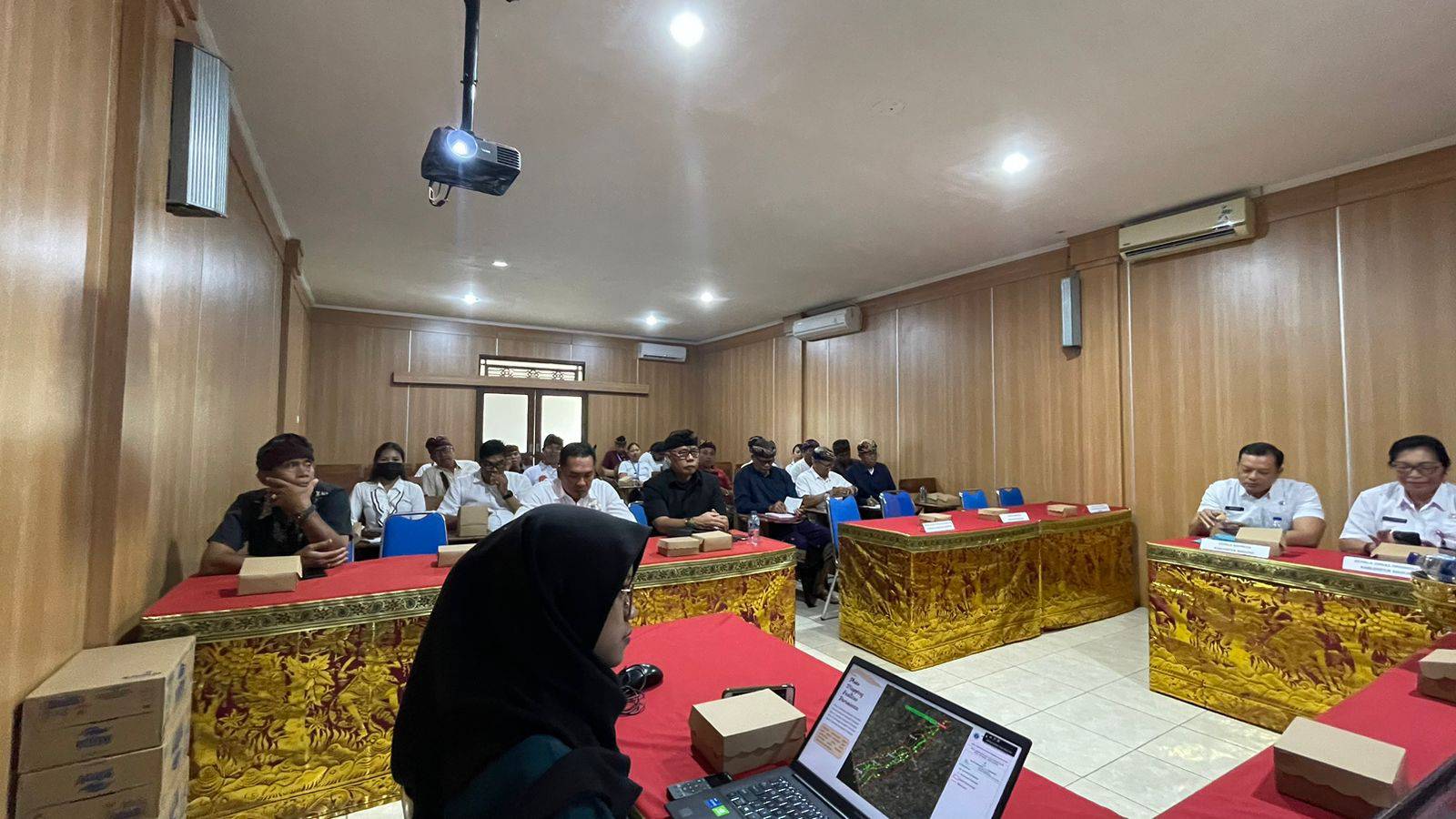Prof. Elfahmi’s Scientific Oration: The Role of Biotechnology in Jamu Development
By Adi Permana
Editor Adi Permana

BANDUNG, itb.ac.id—Indonesia is well known for its biodiversity, including those used for medicine. Currently, 25 percent of medicine in circulation comes from plants.
The traditional medicine system in Indonesia is known as jamu. Thanks to the development of science, jamu has now evolved into modern medicine with high economic value.
This was conveyed by Professor of the Institut Teknologi Bandung School of Pharmacy, (SF ITB), Prof. Dr. Elfahmi, S.Si, M.Si at the Professor's Scientific Oration, Saturday (18/3/2023), in the ITB West Hall. The scientific oration presented was titled "Jamu: Traditional to Modern Era of Biotechnology to Increase Levels of Medicinal Plants’ Beneficial Contents".
Prof. Elfahmi raised "Jamu" as the topic of his speech because of its use in Indonesia which has been passed down for generations. In fact, every culture in Indonesia has a tendency of concocting its own medicine. Through an ethnopharmacology study approach, Jamu began to evolve into modern herbal medicine.
“I even befriended a shaman then we researched and looked for information together. What the shaman claims have been scientifically proven, even beyond the drugs that have been studied," Prof. Elfahmi said.
As of now, medicinal plants can be processed in four approaches. First, the medicinal plants are still processed and their extracts are taken to become jamu and herbal medicines. The second approach is through a modern approach, for example, jamu which has developed into commercial medicine (herbal medicine) that has to be registered to BPOM. Herbal medicines themselves are categorized into three types; herbal medicines registered at BPOM, standardized herbal medicines, and phytopharmaceuticals (medicines of the highest quality and relevance to modern medicine).
The third approach is that medicinal plants can be used as conventional medicines from natural ingredients (plant-derived drugs) whose processing comes from the isolation of extracts of medicinal plants. The last approach, nutraceuticals or nutrition that can improve human health conditions, is usually used in cosmetics.
The development of these herbal medicines has four major challenges. First, the efficacy of herbal medicine has not been scientifically proven. However, it has been refuted by the existence of a methodological approach to prove it using pre-clinical trials and clinical trials.
Second, the pharmacologically active compounds are often unknown. With the ever-growing development of science and technology, it is possible to isolate these compounds into pure compounds.
Thirdly is the standardization which is highly dependent on the levels of plant compounds. This is to ensure the safety, efficacy, and quality of medicinal plants. To do this, a marker compound is needed. Prof. Elfahmi succeeded in making a marker compound that has been used by researchers and industries in Indonesia. This innovation is able to substitute imported products because researchers previously imported marker compounds.
"The gotu kola plant has two beneficial compounds, which are asiaticoside and madecassoside. We collected these from Jatinangor in different various places, and it turns out that the results show up to 100-1000 times of different compound levels," Prof. Elfahmi revealed.

The fourth challenge is the low levels of active compounds in the plants. Prof. Elfahmi answered this challenge with a biotechnological approach. Some of the methods he has used are Tissue Culture Technology, Genetic Transformation, and Genetic Engineering Techniques.
The tissue culture method in plants is done by duplicating nutrients in the soil to other growing media. Tissue culture is used to obtain good plant seeds with higher content levels of compounds. In his presentation, Prof. Elfahmi used the chamber bitter, fingerroot (the main ingredient of jamu), and cat's whiskers as his examples, all of which were developed in Erlenmeyer flasks.
The tissue culture will then progress to genetic transformation by injecting the bacterium Agrobacterium rhizogenes into the plant. The bacteria genes can stimulate the root formation of plants. At the same time, the plant will trigger a secondary metabolic production response. This method has been carried out by Prof. Elfahmi on the Artemisinin compound for malaria drugs and obtained content levels of 0.29%.
Genetic engineering techniques have become an effective method for increasing the content levels of plant compounds in a short time. This method allows the production of secondary metabolites in plants by microorganisms (bacteria, fungi, etc.).
This research is still being done by researchers globally in order to produce recombinant S.cereviceae containing high content levels of artemisinin and or its derivatives. As a result, artemisinic acid is produced in large quantities, namely 25g/L which is then chemically synthesized into artemisinin compounds.
The biotechnology approach enabled traditional medicine to compete with modern medicine. The low content levels of medicinal compounds in plants are not an obstacle to the development of herbal medicines. It is hoped that the production of herbal medicines can survive in any conditions. Jamu which has been developed into herbal medicine has proven its benefits without leaving its original knowledge.

Prof. Elfahmi himself is part of the Biology Pharmacy Research Group and is currently the Vice Dean for Academic Affairs of SF ITB. He is also active as Head of PUI-Nutrasetikal, PP BB-ITB, and vice chairman of STP PIU ITB. Research and innovation are inherent in him.
Prof. Elfahmi has published 75 articles in international journals, 57 of which are indexed by Scopus. Prof. Elfahmi also won the ITB Best Innovator award at Prima ITB 2022. His various findings have led him to become a speaker at international seminars in 23 countries, which now has brought him to be a Professor.
Reporter: Pravito Septadenova Dwi Ananta (Geological Engineering, 2019)
Translator: Hanna Daniela Ayu (Aerospace Engineering, 2021)

.jpg)

.jpg)
.jpg)
.jpg)



